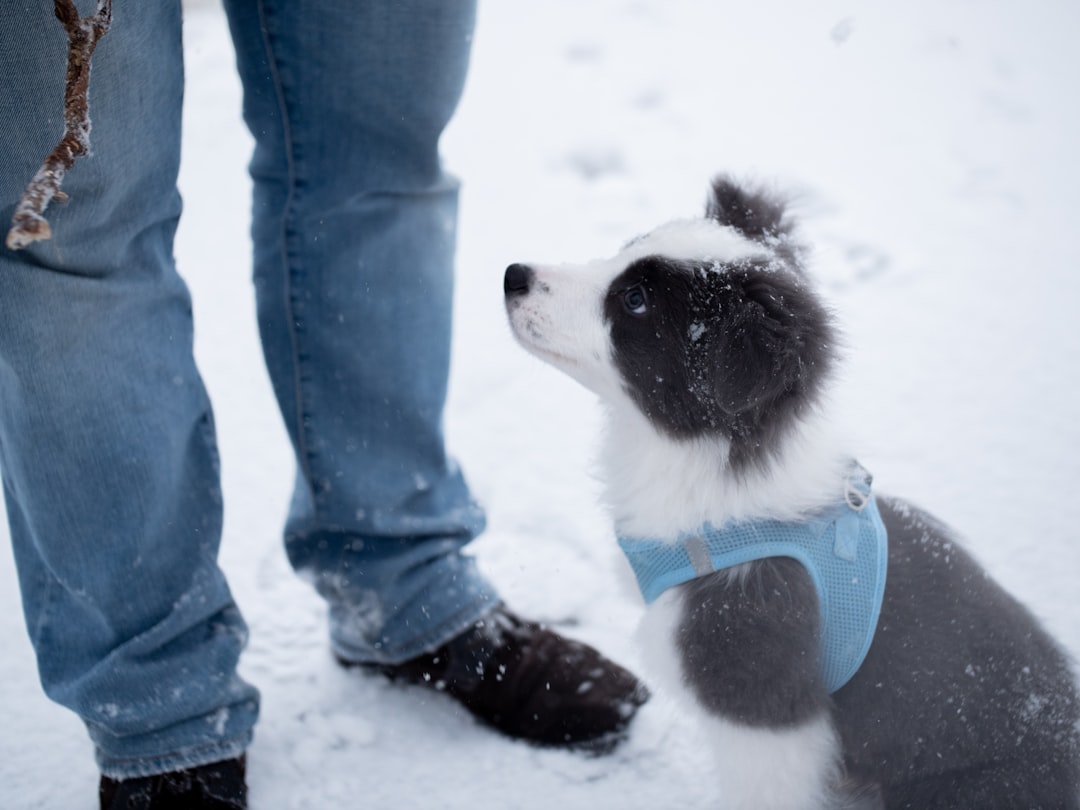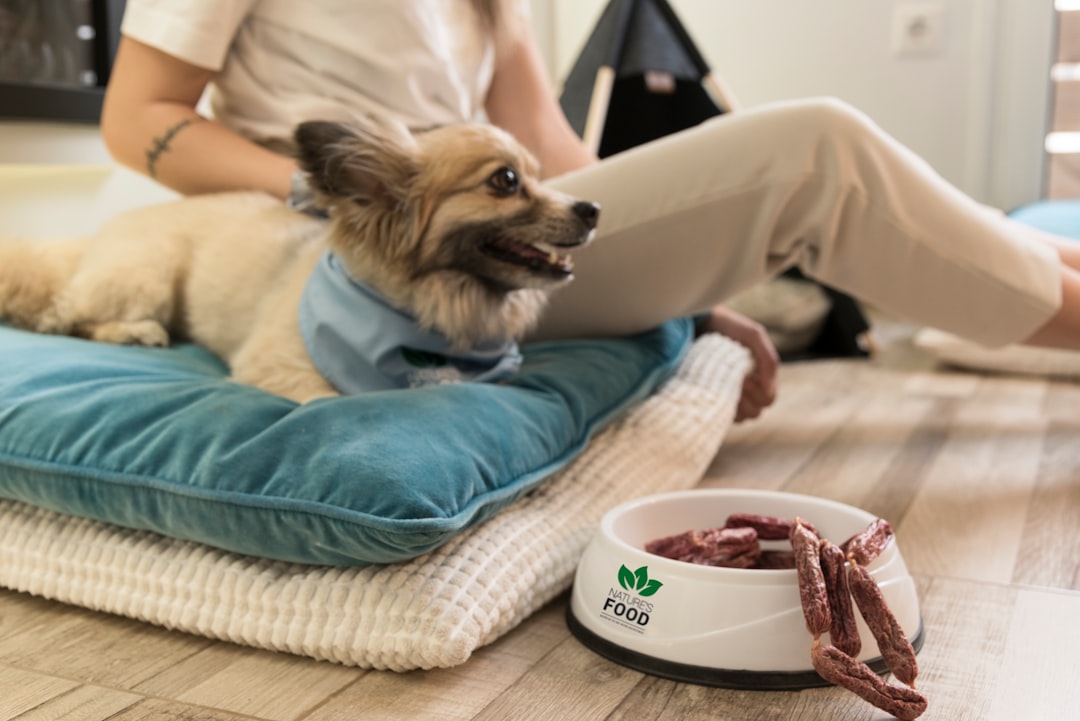Winter Pet Care: How to Keep Your Pets Healthy and Safe During the Cold Months
Key Takeaways
- Keep pets warm and protected from cold stress, frostbite, and hypothermia by limiting outdoor exposure and using insulated clothing.
- Support joint health in winter with vet-approved supplements like LUBRIHANS and pain management under veterinary guidance.
- Protect paws from ice, salt, and toxins with booties, paw wax, and proper cleaning routines.
- Prevent poisoning by storing antifreeze and hazardous plants safely out of reach and knowing emergency contact info.
- Maintain a pet’s coat and nutrition to optimize comfort and energy during colder months.
- Prepare for winter emergencies with proper shelter, ID updates, and a pet-specific emergency kit.
Table of Contents
- 1. Understanding Cold Stress and Hypothermia in Pets
- 2. Managing Arthritis and Using Joint Supplements in Winter
- 3. Essential Paw Protection Tips for Winter
- 4. Antifreeze and Winter Toxin Hazards: What Every Pet Owner Must Know
- 5. Grooming Tips to Maintain Your Pet’s Winter Coat
- 6. Adjusting Diet and Hydration for Winter Pet Health
- 7. General Winter Safety and Emergency Preparedness for Pets
- Conclusion: Proactive Winter Pet Care Pays Off
1. Understanding Cold Stress and Hypothermia in Pets
Winter’s plummeting temperatures can severely affect pets, particularly those with short coats, older age, or health challenges. Understanding cold stress, hypothermia, and frostbite risks is key for prevention.
Why Pets Are at Risk
- Dogs with fine or short fur feel discomfort below 45°F.
- Temperatures at or below 20°F raise significant risks for hypothermia and frostbite.
- Frostbite targets extremities like ears, paws, and tail tips.
- Senior or chronically ill pets, such as those with arthritis or kidney disease, often struggle to retain body heat.
Recognizing Cold-Related Injuries
- Shivering or trembling
- Unusual fatigue or sluggishness
- Pale, bluish, or gray-tinged skin on paws, ears, or tails
- Stiff or hesitant walking
- Ice accumulation on fur, particularly around feet
If you see any of these symptoms, bring your pet indoors immediately. Warm gently with blankets, never heating pads, and contact your veterinarian.
Cold Weather Protection Strategies
- Limit outdoor time: Shorten walks during extreme cold, opting for multiple brief outings.
- Dress for warmth: Insulated coats or sweaters benefit small, thin-coated, and elderly pets.
- Dry off thoroughly: Wet fur causes faster heat loss; towel dry after outdoor time.
- Create cozy indoor spaces: Provide draft-free, soft bedding areas for warmth retention.
For expert guidance, see these winter weather tips for pets.
2. Managing Arthritis and Using Joint Supplements in Winter
Cold exacerbates arthritis symptoms, increasing joint stiffness and pain. Supporting your pet’s mobility through winter helps improve their quality of life.
How Cold Weather Impacts Joint Health
- Temperature drops and barometric pressure changes amplify joint inflammation.
- Lower activity in winter often weakens muscles, worsening joint discomfort.
Supporting Joint Health in Your Pet
- Supplements that work: Consult your vet about LUBRIHANS, which includes glucosamine sulfate, chondroitin, collagen peptides, and hyaluronic acid to support cartilage.
- Veterinary pain relief: Nonsteroidal anti-inflammatory drugs like CARODYL or METAFLAM may help when overseen by professionals.
- Supportive bedding: Cushioned, warm sleeping spots ease pressure on joints.
- Modify exercise: Avoid strenuous activities like jumping or stair climbing; maintain gentle, regular movement.
Discuss all joint treatments with your veterinarian to tailor care effectively.
Learn more in this winter pet safety guide.
3. Essential Paw Protection Tips for Winter
Winter exposes paws to ice, salt, and toxins that can crack skin, cause irritation, or lead to infection. Simple steps can protect your pet’s feet.
Winter Paw Hazards to Watch For
- Ice and packed snow can injure paw pads.
- Salt and de-icers may chemically burn and are toxic if ingested.
- Snow buildup between toes causes discomfort and slipping.
Simple Ways to Shield Paws
- Booties for protection: Create a barrier against cold, ice, and salt.
- Paw wax: Apply before walks to repel moisture and reduce irritation.
- Trim toe fur: Prevent ice balls forming by regularly trimming fur between toes.
- Rinse after walks: Clean paws with warm water to remove residues.
- Choose pet-safe ice melt: Use only labeled products safe for pets in your yard.
Inspect paws routinely for redness, swelling, cracks, or bleeding and consult a vet if concerns arise.
More paw care tips at Cold Weather, Warm Paws.
4. Antifreeze and Winter Toxin Hazards: What Every Pet Owner Must Know
Winter brings toxin risks like antifreeze and certain decorative plants. Awareness and prevention are crucial to protect pets.
The Dangers of Antifreeze
- Ethylene glycol in antifreeze tastes sweet but is deadly to pets.
- Even a teaspoon can cause fatal poisoning.
- Signs include vomiting, drooling, disorientation, seizures, and kidney failure.
Reducing Risk of Accidental Poisoning
- Store chemicals securely in sealed containers out of pets’ reach.
- Clean spills immediately; even small amounts are dangerous.
- Limit pet access to garages, driveways, and storage areas.
- Use caution with holiday plants like poinsettias, mistletoe, and holly.
If Emergency Strikes
If poisoning is suspected, act quickly. Contact your vet or call the ASPCA Animal Poison Control Center at 1-888-426-4435, available 24/7.
5. Grooming Tips to Maintain Your Pet’s Winter Coat
Proper grooming maintains warmth and skin health during winter but requires a gentle approach.
The Role of Fur in Winter
- Avoid shaving or cutting fur too short; it traps body heat.
- Longer coats provide better insulation but need maintenance to prevent tangles.
Winter Grooming Guidelines
- Brush often: Prevent mats and check skin for problems.
- Keep it tidy, not bare: Trim fur moderately around feet and belly if necessary, not full cuts.
- Dry thoroughly: After snow or baths, dry promptly to avoid chilling or irritation.
Visit ASPCA’s cold weather safety tips for more grooming advice.
6. Adjusting Diet and Hydration for Winter Pet Health
Keeping your pet energized and hydrated in cold months supports their overall health and resilience.
Addressing Increased Caloric Needs
- Active pets outdoors in winter burn more calories to stay warm.
- Consider slightly larger meals or an extra feeding with your vet’s approval.
Keeping Them Hydrated
- Cold weather does not reduce the need for water intake.
- Ensure water bowls don’t freeze; heated bowls may help.
- Add wet food to boost fluid intake, especially for pets reluctant to drink.
Consult your vet before changing diets, particularly with medical or mobility concerns.
Learn more at the AVMA cold weather animal safety site.
7. General Winter Safety and Emergency Preparedness for Pets
Being proactive beyond warmth includes emergency planning to protect pets from power outages, accidents, or becoming lost.
Winter Precautions at Home and Outside
- Provide indoor shelter: Warm, insulated, draft-free spaces are essential.
- Leash securely: Snow and ice mask scents, increasing the chance pets may wander off.
- Update ID and microchip info: Current details improve recovery if pets go missing.
- Use heaters wisely: Avoid open flames and unattended heating pads due to burn and fire risk.
Be Ready for Emergencies
- Know where emergency vets and poison control centers are located.
- Keep a pet-specific emergency kit with first aid supplies, blankets, and backup gear.
For additional emergency tips, check MedVet’s Pet Cold Safety Tips.
Conclusion: Proactive Winter Pet Care Pays Off
Caring for your pet in winter means thoughtful routines to protect their comfort, health, and safety. Limit cold exposure, maintain paw and coat care, adjust diet and hydration, support joint health with products like LUBRIHANS, and stay vigilant for toxin hazards.
Always consult your veterinarian before starting new treatments and be ready to act quickly if emergencies arise. With preparation and love, your pet can enjoy a warm, happy winter right by your side.
Find expert-recommended gear, grooming tools, and cold-weather pet essentials at Petocart’s online store—your one-stop destination for year-round pet comfort.
FAQ
How can I tell if my pet is too cold outside?
Watch for shivering, lethargy, pale or blue-tinged skin, ice buildup on fur, or reluctance to move. If these signs appear, bring your pet indoors and warm them gradually.
Are joint supplements safe to use during winter?
Many supplements like LUBRIHANS support joint health, but always consult your veterinarian before starting any new supplement or medication.
What’s the best way to protect my pet’s paws from salt and ice?
Use pet booties or apply paw wax before walks, trim hair between toes, rinse paws with warm water after returning indoors, and use pet-safe ice melts around your home.
What should I do if I suspect my pet has ingested antifreeze?
Contact your veterinarian or call the ASPCA Animal Poison Control Center immediately. Act quickly as poisoning symptoms escalate rapidly.
Should I change my pet’s diet during winter?
Active pets outdoors may need slightly more calories; increased hydration is also important. Always consult your vet before changing feeding routines or diet.






